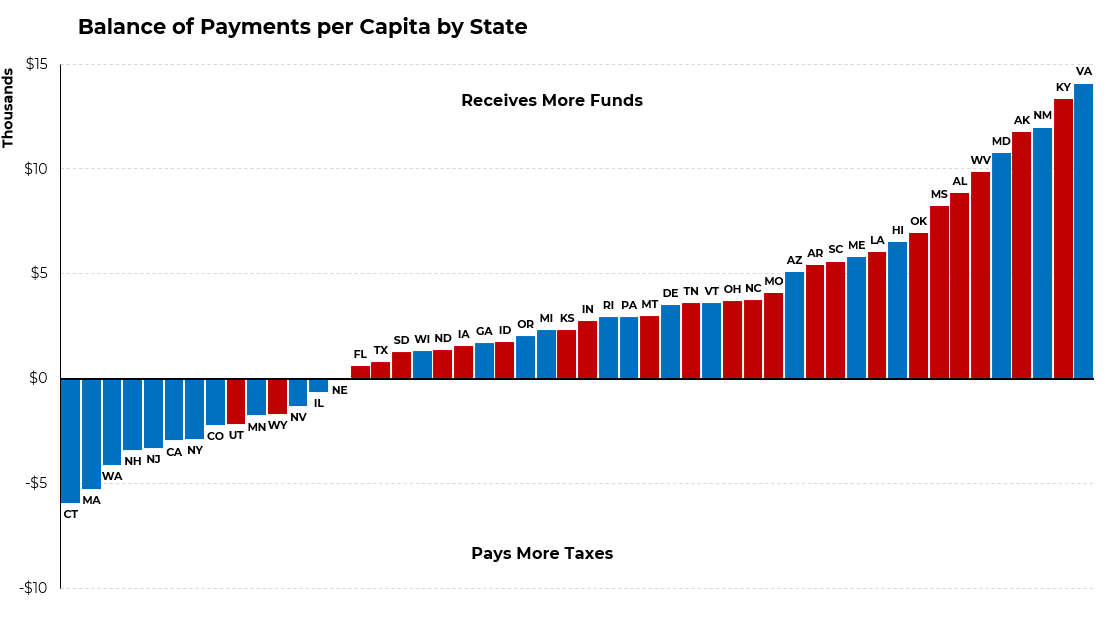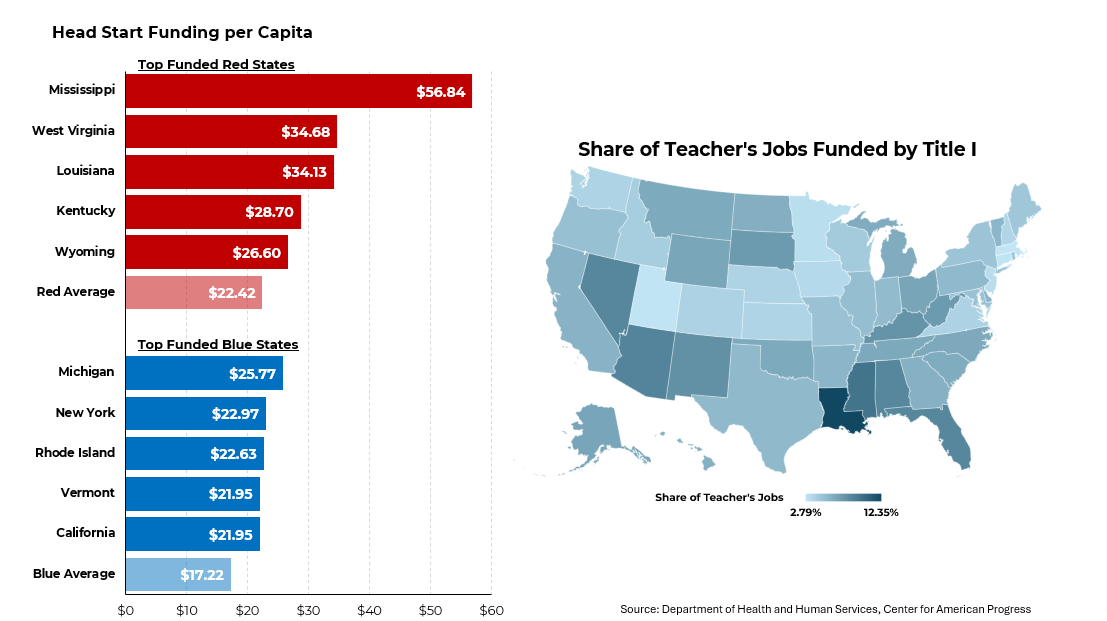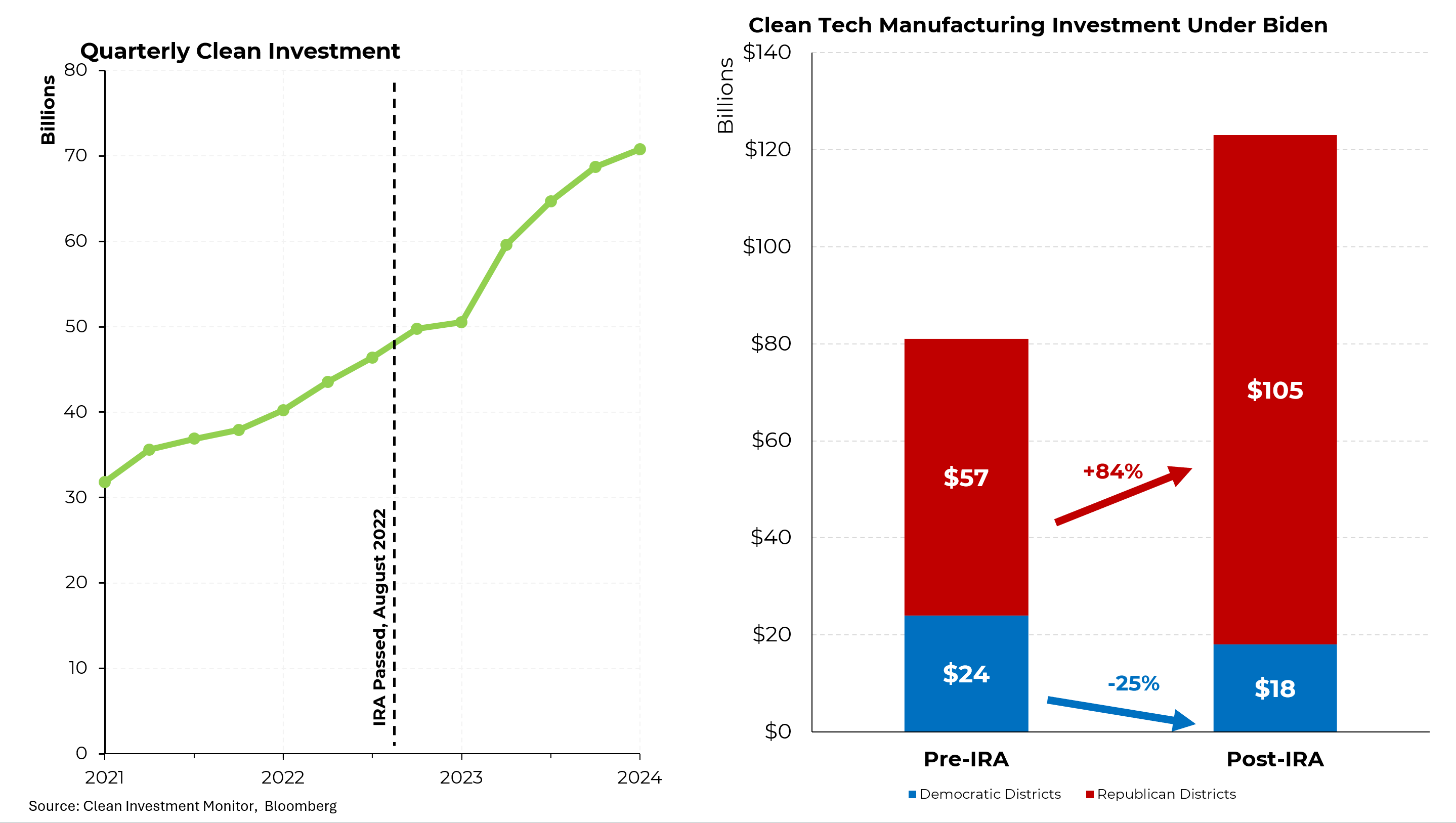One of the more interesting ironies of the political dynamic is that the Republican philosophy of government — less spending and lower taxes — would most benefit the “blue states” while bigger government has been disproportionately beneficial to the red states. Accordingly, if Donald Trump is returned to the presidency, his policies, particularly on the spending side, would impose more relative harm on the states that are more supportive of him.

On an overall basis, blue state residents generally pay far more to the federal government than they receive back in aid and other forms of programmatic support from Washington. Some of this has to do with the fact that average incomes in the blue states tend to be substantially higher than in red states and therefore yield more in taxes — $14,500 per resident of a blue state versus $11,400 from each citizen of a red state. (Note that Virginia and Maryland are notable exceptions to this dichotomy because of the large federal workforces in those states, including a substantial military presence in Virginia.) Accordingly, lower tax rates, as Donald Trump is espousing, would benefit these blue states disproportionately (assuming restoring the deduction for state and local taxes remains off the table.)

While taxes are the biggest driver of the unequal treatment, many spending programs disproportionately benefit red states, in large part because their residents tend to have lower incomes and greater needs, particularly rural residents. Take, for example, Head Start. Mississippi receives $56.84 per resident from Head Start, more than double the amount received by the top-ranking blue state (Michigan at $25.77). On average, red states receive $22.42 per person compared to $17.22 for blue states.) Importantly, Project 2025, the radical conservative manifesto, proposes eliminating funding for Head Start.
Similarly, Title I — a key federal education program also on Project 2025’s chopping block — generally supports more teachers in red states than in blue states, the highest being Louisiana at more than 12% of its teacher rolls. Other states particularly dependent on Title I include Mississippi, Arizona, Alabama, New Mexico, Nevada and Florida. All told, Title I accounts for an average of 5.1% of teacher positions in blue states versus 6.4% of teacher positions in red states.

Ironically, one of the Democrats’ signature new programs — the Inflation Reduction Act — is already benefitting red states more than blue states. The program has sent investment in clean technology soaring, to about $70 billion a quarter, up from $50 billion prior to passage. But the benefits of that surge have diverged widely. In the two years since the passage of the IRA, clean tech manufacturing investment in red states has risen by 84%, to $105 billion while it has declined in blue states by 25%. Particular beneficiaries have been North Carolina, South Carolina and Georgia.
Why have red states attracted so much more investment? Largely because of less expensive land and labor as well as more favorable regulatory environments.





